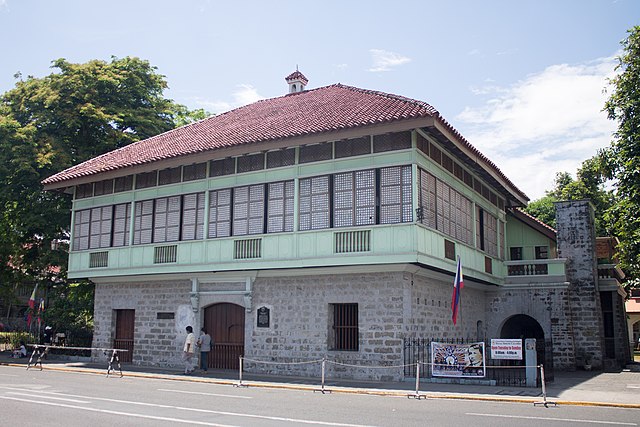The Vega Ancestral House is one of the 1st Transition Bahay na Bato inspired houses that has remained standing and has witnessed the different colonial periods of the Philippines through its estimated 200 years of existence. Sculpted wooden Atlases are perhaps the most interesting feature of this house that is located in Poblacion, Balingasag, Misamis Oriental. Sculpted wooden atlases, known as "Oti-ot" in the Visayan language, provide support to the second floor protrusion of the house. This house is one important structure in the locality that tourists usually come to visit. Notable personalities like Emilio Aguinaldo and Sergio Osmeña had visited this house.
Vega Ancestral House
Sculpted Wooden Atlas
House Interior
View of Vega Ancestral House
Bahay na bato, also known in Cebuano as balay na bato or balay nga bato and in Spanish as casa Filipino, is a type of building originating during the Spanish colonial period of the Philippines. It is an updated version of the traditional bahay kubo of the Christianized lowlanders, known for its use of masonry in its construction, using stone and brick materials and later synthetic concrete, rather than just full organic materials of the former style. Its design has evolved throughout the ages, but still maintains the bahay kubo's architectural principle, which is adapted to the tropical climate, stormy season, and earthquake-prone environment of the whole archipelago of the Philippines, and fuses it with the influence of Spanish colonizers and Chinese traders. It is one of the many architecture throughout the Spanish Empire known as Arquitectura mestiza. The style is a hybrid of Austronesian, Spanish, and Chinese; and later, with early 20th-century American architecture, supporting the fact that the Philippines is a result of these cultures mixing. Its most common appearance features an elevated, overhanging wooden upper story standing on wooden posts in a rectangular arrangement as a foundation. The posts are placed behind Spanish-style solid stone blocks or bricks, giving the impression of a first floor. Still, the ground level contains storage rooms, cellars, shops, or other business-related functions. The second floor is the elevated residential apartment, as it is with the bahay kubo. The roof materials are either tiled or thatched with nipa, sago palm, or cogon, with later 19th-century designs featuring galvanization. Roof styles are traditionally high pitched and include the gable roof, hip roof, East Asian hip roof, and the simpler East Asian hip-and-gable roof. Horses for carriages are housed in stables called caballerizas.

The Rizal Shrine in Calamba is an example of bahay na bato.
An example of bahay na bato Philippine architecture
House in Luneta with thatch roof
Vega Ancestral House Spanish colonial-era nipa mansion, a "1st transition bahay na bato style" house in Poblacion, Balingasag, Misamis Oriental, Mindanao, known for its sculpted wooden Atlases.








